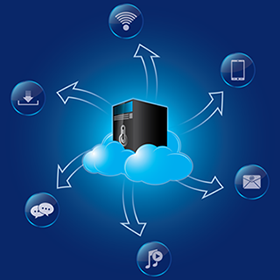Custom Business Workflows
Post Date: 2019-05-16
For many businesses, predefined workflow options work well. The software can be adapted to their needs and the need for more specialized customization isn't a vital one. For others, however, the need to have a workflow tailored to their specific needs is important.
 Let's take a look at why a custom business workflow might be right for your business and what you can expect as you move forward with the process.
Let's take a look at why a custom business workflow might be right for your business and what you can expect as you move forward with the process.
What is a custom business workflow?
A custom business workflow, as the name implies, is workflow software that has been built to meet a specific client's needs. It is custom software, in other words, that is designed to fit a businesses workspace needs perfectly. This is especially useful for “non-traditional” businesses that rely on their workflow to unite team members and guide work tasks daily.
Why should businesses consider a custom business workflow?
There are a few different reasons that a custom business workflow might be right for your business. The first is that your business has specific integration needs that don't work well with standard workflow products (aka off the shelf software). The other is front-end features that are mission-critical to your success. Perhaps you need a search feature that dives into a specialized database to determine how two materials or substances interact with each other, for example. Standard workflow software might not be able to meet that kind of need. A workflow built just for you, however, will have a much better chance of success.
How can custom business workflows benefit your business?
Custom business workflows can help streamline the work process and enable employees to be more productive by saving them time and frustration. Continuing with the example from the above, let's say that your workflow doesn't allow you to see interactions between the substances in question. That means that your employees might spend their time switching between your “main” workflow and the database that contains information vital to their work. As you might expect, this slows them down and can create more chances for human error.
A custom workflow that offers everything your employees need to complete their tasks, on the other hand, can help them work more quickly and more effectively. They won't have to switch between workspaces because the interactions will be visible from the main space. That function will have been integrated into the workflow so that the information can be easily found and recorded.
Phases of Custom Business Workflow Development

Are you interested in custom workflow development? There are a few different phases you can expect to encounter as you move through the process.
Requirements and Information Gathering (Discovery)
The first step to creating the perfect workflow is to examine how you're already doing things. What do you like about your current setup and what absolutely must change? Take some time and look at the current elements of your workflow. Note which ones work for you and which don't. If you have an idea about what could replace the parts that don't work, write them down. It's important to keep this information in mind when the software is being designed.
Design Development and Specifications (Design)
Once you know the functionality and features that your ideal workflow needs to have, it's time to begin the design process. Depending upon who you're working with, this might include mockups of the finished design and conversations about the kind of user experience you're hoping to create for yourself and your employees.
Implementation (Development)
Of course, once the design has been nailed down the actual creation and implementation stage begins in earnest. That includes implementing all of the agreed upon features. This is also the coding phase of the custom workflow development process and the project's goals and specifications will have to be met as the coding moves forward.
System Testing (testing? Was hoping for another D word)
Once your custom workflow has been designed and developed, it's time to rigorously test the software to ensure it contains the functionality and reliability you need. This is also the phase during which user interface, protocols, features, databases, and modules will be integrated into the workflow itself. Testing is done to ensure everything works as it should.
Launch! (Deployment)
The last step of the process is, of course, workflow deployment. It is during this phase that your custom workflow will be installed and integrated according to your specifications. This can often be done remotely as well as onsite.
Is custom software right for your business?
Custom software might not be right for everyone, but it can be an incredible advantage for almost anyone when done well. It's important to enlist the help of experienced creators. The experienced team at Method Development can help. We have the knowledge needed to create your ideal workflow solution. Reach out to us today for more information.